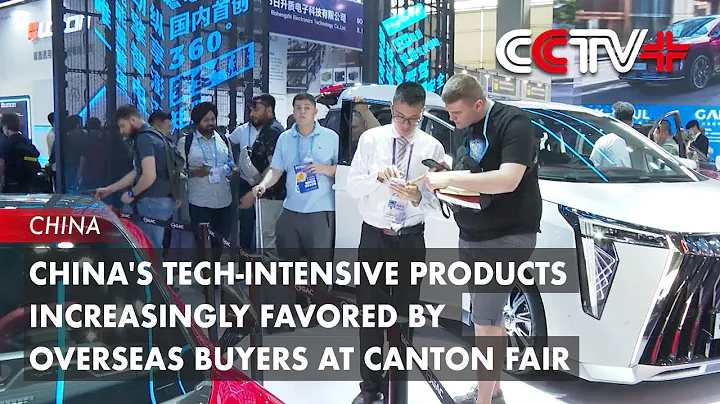From June 27th to 29th, 2022 China Automobile Supply Chain Conference and the first China New Energy Intelligent Connected Vehicles Ecological Conference were held in Wuhan Economic Development Zone, Hubei. The theme of this conference was "Integrated Innovation, Green Development-Creation New ecology of China’s automobile industry”. At the theme forum of "Diversified Co-creation - Creating a New Ecosystem of Intelligent Networking" held on the afternoon of June 28, China Automobile Association SDV working group leader and Huawei smart car solution BU general manager of smart car control field Yu Xiao Give a keynote speech .

The following content is a transcript of the on-site speech
Good afternoon, leaders, experts, and colleagues!
First of all, I would like to thank China Association of Automobile Manufacturers (hereinafter referred to as China Association of Automobile Manufacturers) for inviting me to participate in the 2022 China Automobile Supply Chain Conference and the First China New Energy Intelligent Connected Vehicle Ecological Conference. Huawei, as the leader of the SDV working group, shared the past two Main work progress and reflections in the year.
Under the general trend of software-defined cars, software development plays an increasingly important role in the process of vehicle development and iterative evolution. Various companies in the automotive industry chain, including OEMs, Tier1/2 suppliers, and ICT companies Investments in automotive software talent and development are also increasing, and various companies with different positionings have different implementation paths for software-defined cars. Some OEMs hope to build their own R&D and fully vertically integrate their own systems. Some platforms Suppliers focus on open cooperation to build a comprehensive ecosystem, and some software suppliers focus on product research and development in certain subdivisions.
Our SDV working group generally believes that: Different companies in the automotive industry need to strengthen collaboration, make full use of the scale advantage of China's automotive industry chain, integrate superior resources to focus on solving common problems, and open up different software and hardware products of upstream and downstream companies through standardized interfaces to reduce duplication. Development and waste of manpower are the best ways to accelerate the development of smart cars.
In the rapidly developing smart car industry facing the future and the trend of personalized development for thousands of people, the automobile industry is facing many challenges:
First: smart car hardware and software configurations are facing several 10-fold growth: namely The combination of smart hardware has increased by more than 10 times, the number and types of new plug-and-play smart peripherals for the future have increased by more than 10 times, and the size of APP applications and codes for end users has increased by at least 10 times. How to manage the exponentially increasing complexity of these software and hardware combinations and balance competitiveness, quality, cost, and E2E efficiency will be a major challenge.
Second: In terms of the intelligent experience of end users, the introduction of personalization will lead to an explosive growth in demand diversity. Recently, a conservative estimate has exceeded 2,000 basic scenarios for crowdfunding experience needs of end users for a certain domestic car model. Continuing the user experience of smart terminals, coupled with the arrangement of space, sound, vision and other sensors in smart cars, will expand the usage habits of smart terminals to more smart components, bringing faster iterations in space, sound field, vision, comfort, etc. and changes;
Third: Due to the car-cloud collaboration caused by smart cars, the functional safety and network security of smart cars will definitely transform from a single element to a multi-element vehicle coupled , with a large number of integrated smart hardware from multiple suppliers The risks of safety hazards and software are increasing day by day. Functional safety assurance under smart cars is also a topic that needs to be continuously improved and enhanced;
Fourth: In view of the rapid changes and safety risks of the above-mentioned smart hardware and application software; for smart cars The increased attack surface brought by network connectivity, code vulnerabilities, security risks and hacker attacks brought by smart software, vehicle security capabilities and mechanism control all require the development of reasonable specifications and detection and verification mechanisms.
Looking back on the century-old development history of the automobile industry, based on different hardware platforms, the automobile industry itself has a large number of customized and privatized interfaces. With the advent of the era of intelligent and networked software-defined automobiles, if the software development model of each part is There are no appropriate constraints on technology, architecture, and interfaces. It is conceivable that compared with traditional cars, the development of smart cars will require doubled manpower investment to adapt, debug, and solve problems. Even so, it still cannot satisfy the growing number of end users. With the diversity of demands and the speed of iteration, the pressure of competition will also increase.
Based on this, with the strong support and advocacy of the China Association of Automobile Manufacturers, in December 2020, the Software Defined Vehicle Working Group (abbreviation: SDV Working Group) was jointly established. The purpose is to cooperate with the upstream and downstream automobile industry to jointly respond to challenges, build consensus, and expand the industrial chain.
The vision of the SDV working group: jointly define the future-oriented new generation of smart car electronic and electrical architecture, promote the standardization of smart car software and hardware interfaces, reduce the complexity of smart car research and development, accelerate the development process of smart cars, promote relevant technical standards and ecological construction, and jointly Make China’s smart car industry chain bigger and stronger. The goals of the
working group: to jointly define and publish device abstract interfaces and atomic service interfaces; to unite with OEMs, parts suppliers, software developers, etc. to carry out reference implementation development based on the SDV service API interface; to discuss common issues and share the best practice to promote SDV consensus and accelerate innovation.
Preparatory work related to the SDV working group was carried out from August to December 2020; the formal founding meeting was held on December 21, 2020; the first plenary meeting was held on April 18, 2021. Starting from June 2021, the working group will continue to iteratively release the SDV service API interface reference specification.
After more than a year of development, the current member units of the SDV working group have grown to more than 100 , including OEMs, parts Tier1/Tier2, automotive software developers in different fields and other companies. We have achieved basic results in the following two aspects: Consensus:
First: Hierarchical decoupling is a key means to improve software reusability and reduce the complexity of SDV software and hardware development. OEMs, component suppliers, and software providers need to open up and collaborate and focus on leveraging their own advantages at their respective levels. Ensure product innovation and competitiveness.
Second: Atomic service API and device abstraction API are the key to realizing the interconnection and interoperability of products from different manufacturers. For common interfaces, each enterprise does not need to customize a set. By reusing common interfaces, duplication and customization are reduced, and the efficiency is improved. Reusability of software and hardware across platforms and car companies.
Focusing on the work goals of the SDV working group, after more than a year of joint efforts, it has iteratively released five software-defined automotive atomic service APIs and device abstraction APIs, and will soon release a software-defined automotive industry innovation white paper.

Automobile intelligence In order to truly realize software-defined cars and thousands of people, it is necessary to build a digital base for smart cars. The SDV working group jointly discussed that the implementation of software-defined cars requires layered and decoupled , including the lowest layer and hardware The device abstraction layer of the interface; the basic platform includes the computing and communication framework and the basic operating system based on the control chip MCU/MPU that complies with CP/AP. The basic software architecture includes software management, maintenance, diagnosis, OTA upgrade, network security, etc. There is no business function management module; on the basic platform, for the business part, it is necessary to provide corresponding atomic service layers for many intelligent hardware being controlled, for flexible invocation of upper-layer composite services and applications; composite services on the atomic service layer The layer is to build simple functional module units based on atomic services. Above the combined service layer are various application apps for vehicle control, interaction, life and entertainment, and smart driving.
The ever-changing intelligent applications in the future will inevitably bring about more flexible and convenient requirements for the combined service layer, more stable, refined, easy-to-use, and easy-to-use atomic service interfaces, and flexible adaptation and access to more intelligent components; only Only by opening up and collaborating in the industry to jointly create a flexible yet unified and standardized digital base can we ultimately adapt to the rapid development of software-defined cars in the future.
Therefore, the current focus of the SDV working group is to formulate unified and standardized key API interfaces for the two layers of device abstraction layer and atomic service layer, and jointly create a solution covering motion control , body control, thermal management, energy management, chassis domain, etc. Standardization and standardization of key interfaces of digital bases in multiple fields; the working group follows the principle of open collaboration in the process of formulating APIs, and fully gathers industry wisdom and experience through standardized API definition, review, decision-making and release processes. OEMs, parts and components Suppliers, industry organizations, platform providers, software companies and other parties are deeply involved in API definition through different channels, and iteratively updates as needed to ensure that the API is easy to use, easy to use and universal.
is based on the standard API interface. In the development process of smart cars, OEM, as the assembler, can choose the most appropriate software development model based on its own capabilities and organizational characteristics to ensure smart car SOP delivery. For example, the platform provider can be required to provide both device abstraction and atomic services, while OEM itself focuses on the development of composite services and upper-layer APP applications. You can also entrust a service integrator to provide both atomic services and composite services, while the basic software platform provider is only responsible for providing platform middleware, and can even require middleware to be hosted on different underlying OS operating systems. Of course, based on the strong strength of the OEM, it is also possible to only require the software platform provider to provide OS and platform middleware. The OEM OEM organizes its own software personnel or software subsidiaries to complete platform-based device abstraction, atomic services and combination services, and upper-layer End-to-end development and integration of multiple modules such as applications.
On the basis of ensuring a unified architecture, the selection of suppliers/software providers at the intermediate layers can also be more flexible to support the exploration of optimal delivery models in the practice of different models, which is conducive to rapid iteration of software and service providers. Survival of the fittest; to achieve this requires standardization of API interfaces, especially the device abstraction layer and atomic service layer. These two layers are the basis for building digital base software that decouples software and hardware.
is based on layered decoupling and standard API. Suppliers at each layer can use standardized interfaces to give OEMs or integrators more choices and replacement possibilities. By trying the optimal combination, they can continuously polish and improve efficiency; only the middle layer can be implemented Minimizing the impact of module changes on other businesses is conducive to the construction of the entire software-defined automotive ecosystem.
In the past year or so, during the practice of SDV, the working group has iteratively released API interface standards. On the other hand, it has also discovered some problems and challenges, which are shared here with everyone.
First, the working group has defined more than 700 APIs, and has also selected some models that are still in the process of SOP to try to implement them, but the scale is still very limited. We hope that more OEMs can put these API references into practice in some In terms of vehicle models, through the actual development process of actual vehicles, we continue to polish and optimize the API standard interface. At the same time, we hope that in the process of trying to implement these models, we can feed back to our working group and grow together.
Second, the layered architecture of software-defined cars will lead to more diverse software types and more complex software systems in the future. In the face of multiple complex software development and integration of vehicle systems, a more efficient integration tool chain is needed to ensure ; Achieve efficient development of software, timely location of software problems, optimization of software system performance, and integrated deployment of multiple software. These are all requirements for a more efficient integrated tool chain.
Third, combined services based on the atomic service layer. Each car manufacturer has its own characteristics and its own unique functional module definition. Whether more aggregation is needed on this layer, more consideration should be given to interface specification and function standardization. , this is also a topic worth exploring.
AUTOSEMO has also done a lot of analysis and research in this area. In the future, our SDV and AUTOSEMO can continue to carry out more cooperation based on this. This is an important goal to promote the establishment of the entire software branch.
Only by realizing the hierarchical decoupling of the entire vehicle software architecture and the standardization and normalization of the software interface can our software-defined car ecosystem grow more healthily in the future. I believe that under the leadership of the Automotive Software Branch, this goal will eventually be achieved. ;
Finally, on behalf of the SDV working group, I would like to propose that the healthy and sustainable development of China’s smart automobile industry cannot be separated from the joint efforts of the China Association of Automobile Manufacturers and everyone in the industry. Open collaboration and win-win cooperation are the key to making China’s automobile industry bigger and stronger. The best path to overtake in corners and lead the world. The SDV working group is very willing to jointly promote closer cooperation in the industry under the leadership of the Automotive Software Branch, open and win-win, and jointly make China's intelligent connected automobile industry bigger and stronger. Cake:
Co-build : Unite various industry organizations, business units, etc. , jointly define and release the best and easiest-to-use SDV API interface specifications and software interface recommendations at each layer, promote relevant technical standards, and release reference implementations of software and hardware interfaces and software packages that can be applied to automotive software development.
co-create : a consensus-based interface standard for developers to jointly innovate and jointly develop around smart car-enabled scenario-based reference implementations to explore software-defined cars from OEMs, equipment providers and software application providers. a successful business model.
Win-win : Combining respective advantages and accumulation, division of labor and collaboration, reducing waste, openness and win-win, jointly making the automotive industry cake bigger, so that participating outstanding software and hardware companies and OEM OEM R&D units can develop intelligent connected cars in China It has developed and grown stronger in the wave of the times.
We can go faster alone, but we can go farther together. Let us work together to create a new ecosystem of software-defined cars. Thank you all.





















